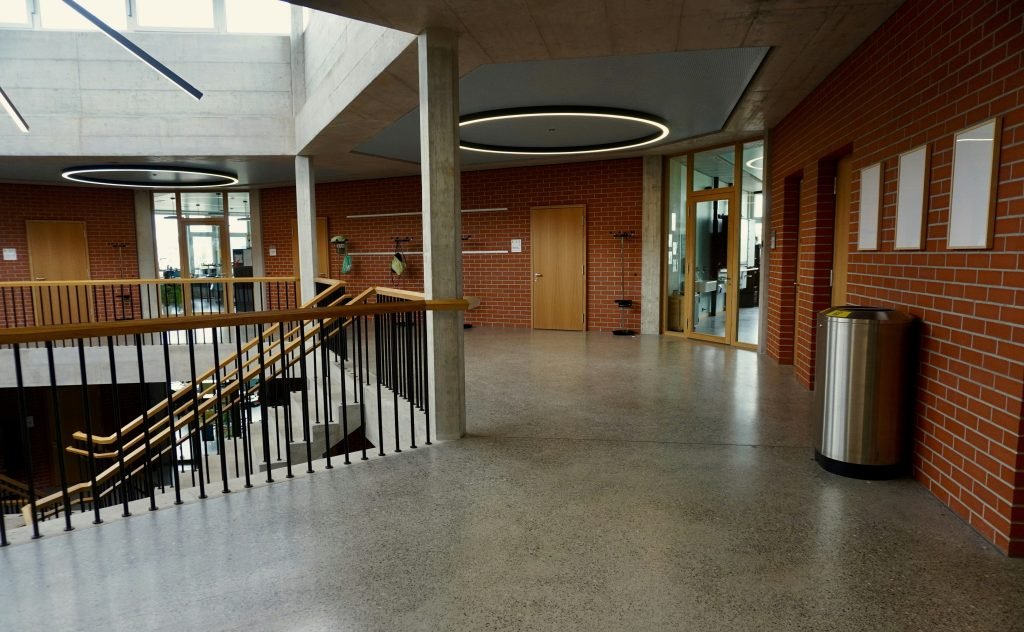How do you go about choosing the right flooring for your home? It can be a daunting task, especially with the myriad of options available today. From the type of climate where you live to the lifestyle you lead, several factors come into play when determining the best flooring choice for your space.

This image is property of images.unsplash.com.
Understanding Your Needs
Before embarking on your flooring journey, it’s essential to assess your specific needs. By identifying what you want and require from your flooring, you can start narrowing down your options.
Lifestyle Considerations
Consider your daily activities. Do you have kids? Pets? Or maybe you love hosting parties and family gatherings? If so, you’ll need flooring that can withstand heavy use. More delicate materials might not be ideal in your scenario.
- High Traffic Areas: If you have a lot of foot traffic or activities happen regularly in certain areas of your home, think about durability.
- Allergies: If anyone in your home has allergies, you might prefer hard surface flooring that’s easier to clean and doesn’t trap dust.
Aesthetic Preferences
Your personal style plays a significant role in your flooring choice. Do you prefer a rustic look or something modern and sleek? Being clear about this will help guide your selection process.
- Color Scheme: Consider your existing décor. Is your space filled with warm tones or cool tones? Your flooring should complement these colors.
- Texture: Different flooring materials will have various textures, adding another layer to your design.
Climate Considerations
The climate in your region can significantly influence your flooring choice. You wouldn’t want to choose a flooring type that can warp or sustain water damage based on your local weather.
Temperature Changes
For homes located in areas with extreme temperature variations, certain materials may not hold up well over time.
- Warm Climates: Materials like tile or vinyl are excellent for keeping your home cool.
- Cold Climates: Carpeting may be more comfortable underfoot in colder regions, but ensure it’s easy to clean.
Humidity Levels
Humidity can affect many types of flooring. Some materials are better suited for humid conditions, while others can sustain damage.
- High Humidity Areas: Opt for moisture-resistant materials like vinyl or tile, ideally in basements or bathrooms.
- Low Humidity: Wood flooring can thrive, but it needs to be appropriately treated for potential dryness issues.

This image is property of images.unsplash.com.
Types of Flooring Options
With a better grasp of your needs, let’s take a look at the various flooring options available to you. Each type has its advantages and disadvantages, which you should weigh before making a decision.
Hardwood Flooring
Hardwood flooring exudes warmth and sophistication. It can add significant value to your home, making it a popular choice.
Pros
- Timeless beauty and variety in colors and grain patterns.
- Durability and can last a lifetime with proper care.
- Can be refinished multiple times to restore its original beauty.
Cons
- Can be expensive to install, particularly with exotic woods.
- Susceptible to moisture damage, so care is needed in humid areas.
- Requires regular maintenance, including refinishing every few years.
Laminate Flooring
Laminate flooring is an appealing and cost-effective alternative to hardwood. It mimics the look of various materials, including wood and stone.
Pros
- Affordable and easy to install, perfect for DIY projects.
- Scratch and stain-resistant, making it suitable for high-traffic areas.
- Available in various styles and designs.
Cons
- Not as durable as hardwood, may require replacement after years of wear.
- Cannot be refinished, so you’ll need to replace it entirely if it gets damaged.
- Can feel hollow underfoot compared to solid materials.
Vinyl Flooring
Vinyl flooring has gained popularity due to its versatility and resilience. It’s available in sheets, tiles, and planks, allowing for various installation options.
Pros
- Water-resistant, making it ideal for kitchens, bathrooms, and basements.
- Soft underfoot, which can be a boon for your back and joints.
- Easy to clean and maintain, making it suitable for families.
Cons
- While it can imitate wood, some people feel it lacks the genuine look.
- Generally, may not add much resale value compared to hardwood.
- Depending on quality, lower-grade vinyl can dent or scratch easily.
Tile Flooring
Tile flooring is a robust choice, especially in moisture-prone areas. It comes in ceramic and porcelain varieties, each with unique benefits.
Pros
- Water-resistant and perfect for wet areas like bathrooms and kitchens.
- Extremely durable and easy to clean.
- Available in numerous designs, colors, and styles.
Cons
- Can be cold and hard, making it less comfortable for long periods.
- Installation can be complex and may require professional help.
- Grout lines may stain or require regular cleaning to maintain appearance.
Carpet
Carpet adds warmth and comfort to any room. It is an excellent choice for bedrooms or family rooms where coziness is essential.
Pros
- Luxurious feel underfoot and significant noise absorption.
- Available in various colors, textures, and patterns.
- Can be more affordable than many hard surface options.
Cons
- Can stain and harbor dust, which may be problematic for allergy sufferers.
- Requires regular vacuuming and professional cleaning from time to time.
- May not hold up well in high-traffic areas without wearing out.
Budgeting for Your Flooring
Flooring costs can accumulate quickly, so you’ll want to establish a budget before making your decisions. Putting together a solid plan can help you stay on track and make informed choices that suit your financial constraints.
Determine Your Budget
Assess your overall renovation or buying budget. How much can you allocate to floors without impacting your other needs?
- Material Choices: Keep in mind that the material you choose can vary greatly in price. Custom or specialty options may exceed your budget.
- Labor Costs: Don’t forget to factor in installation costs. Some flooring types can be DIY-friendly, while others may require professionals.
Assess Long-Term Costs
Sometimes a lower upfront cost can lead to higher maintenance or replacement costs long-term. Look for options that offer a balance of initial affordability and longevity.
- Durability: Investing in durable materials can save you money in replacements down the line.
- Maintenance: Consider the amount of upkeep and cleaning your selected flooring requires.

This image is property of images.unsplash.com.
Assessing Installation Options
Once you’ve narrowed down your choices, you’ll need to think about how the flooring will be installed.
DIY vs. Professional Installation
Depending on your skills and availability, you may choose to install the flooring yourself or hire professionals.
DIY Installation
If you’re the handy type, many flooring options, like laminate and vinyl, can be installed as a DIY project.
- Pros: Cost savings and the satisfaction of a job well done.
- Cons: Time-consuming and requires tools and knowledge about flooring installation.
Professional Installation
For peace of mind and potentially better results, you might want to hire professionals, particularly for more complex materials like tile.
- Pros: Expertise in installation can prevent future issues.
- Cons: Higher upfront costs, which will eat into your budget.
Maintenance and Care
Once you’ve finalized your flooring choice, it’s vital to understand how to maintain it for longevity. Each material requires different care methods.
General Maintenance Tips
Regardless of your flooring type, some tips remain universally beneficial:
- Regular Cleaning: Keep floors clean by following a regular cleaning routine according to the material.
- Protective Measures: Use mats in high-traffic areas and furniture pads to prevent scratches and damage.
Specific Material Care
Each flooring type necessitates specific cleaning and maintaining methods:
- Hardwood: Use a damp mop and specific hardwood floor cleaner; avoid excess water.
- Laminate: Clean with a dry mop or special laminate cleaner; avoid water pooling.
- Vinyl: Mop with a neutral pH cleaner; no scrubbing pads.
- Tile: Regularly clean grout and seal it if necessary; use a soft-bristle brush for dirt in grooves.
- Carpet: Vacuum regularly and promptly address stains with suitable carpet cleaning products.
Final Considerations
When choosing flooring for your home, it’s essential to consider the blend of practicality and aesthetics. Take your time evaluating all your options, and don’t hesitate to consult with flooring professionals for insights tailored to your needs. Remember, flooring is a long-term investment, and the right choice will enhance both the look and functionality of your home for years to come.
Visualizing Your Space
If you’re having trouble picturing how different flooring options might look in your space, many manufacturers provide online visualizers. These tools let you upload a photo of your room and change the flooring to see how it will appear. This can help ease your decision-making process, ensuring you pick a style that complements your home beautifully.
Seeking Expert Help
If you’re still unsure after all your homework, consider reaching out to local flooring experts. They can provide additional insights based on your specific home layouts, lifestyle, and preferences, ultimately helping ensure you make the best flooring choice possible.
By approaching your flooring selection thoughtfully and thoroughly, you’ll be on your way to creating a beautiful and functional space that you and your family can enjoy for years to come.




